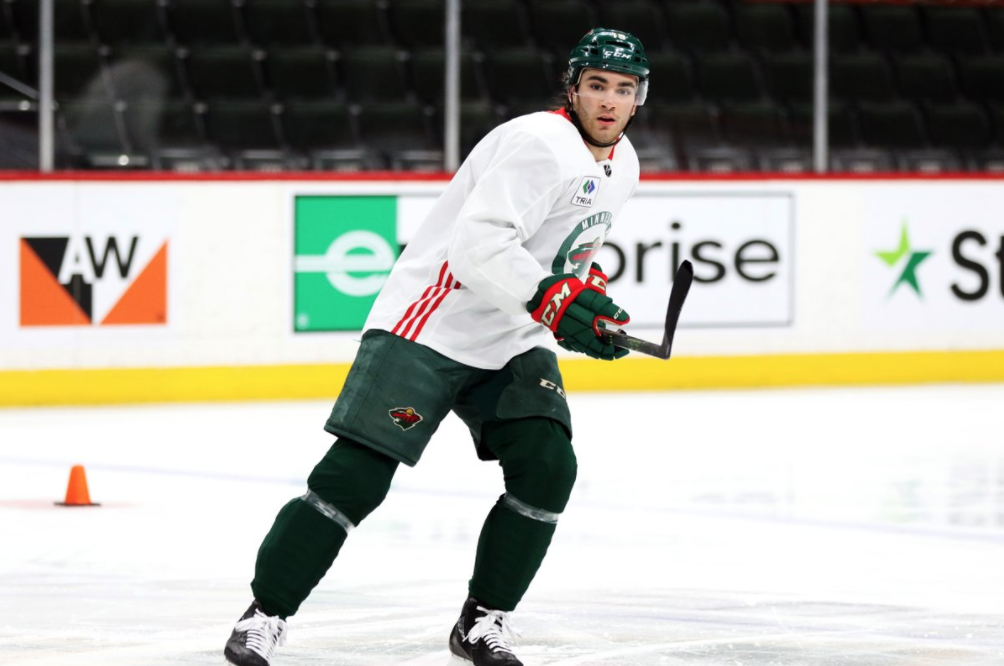
The Minnesota Wild announced Monday afternoon that rookie forward tore the anterior cruciate ligament (ACL) in his left knee this past Sunday and that he will be undergoing reconstruction surgery in the coming weeks. The Wild expect him to return to action in approximately seven months.
Despite ACL tears being one of the most widely known and researched athletic injuries, their frequency of occurrence is much lower in hockey as compared to sports like soccer, football and basketball.
As such, little is known about recovery timelines and return to prior level of play in this population.
A recent study conducted by researchers at TRIA Orthopaedic Center in Bloomington, Minnesota looked at how NHL players who sustained an ACL injury fared once they returned to play as well as how long their recovery process took.
They utilized the NHL Injury Surveillance System to identify the number of players who sustained an ACL tear between the 2006 and 2010 seasons.
Over the four year span, 47 players suffered ruptured ACLs, with 32 players also suffering meniscal tears and 32 players suffering medial collateral ligament (MCL) injuries. Of the 47 players, 36 were forwards and 46 were sustained via contact (i.e. collisions with other players and/or the boards).
The average career length post-ACL injury was found to be 2.8 seasons, with concomitant meniscus injury being much more impactful on a shortened career than MCL injury.
Here is where things start to get interesting.
Forwards' on-ice performance seemed to suffer the most after ACL reconstruction. Compared to an equivalent control group, the injured players' assists dropped from an average of 20.3 per season to 13.8 one year post-op and 10.0 after two years.
Total points dropped from 35.2 to 25.9 to 10.0. However, it should be noted that 11 of the 36 players were able to tally equal or greater goals, assists, and points in their first season post-injury.
The number of games that forward's played per season post-injury dropped from 71.2 during their healthy year to 58.2 the next season and 59.3 in the second season. The average return-to-play timeline was 9.8 months but ranged from six to 21 months.
So what does this all mean for Kunin?
In short, it's difficult to say.
The greatest challenge he and the Wild's medical staff will face during the rehabilitation process is the fact that ACL return to play protocols isn't as firm or standardized in hockey due to their infrequency of occurrence. This can, perhaps, be seen in the fact that the Wild expect him to return in approximately seven months.
In sports like soccer, basketball, and football, it has become widely accepted that return to play should occur in 9-12 months post-surgery, however, those sports have standardized rehab programs that are built on the foundation of a gargantuan amount of data points. Hockey doesn't have that "luxury".
The rehab progression and ultimate return to play will still be guided by objective data and tests, but the sample size just isn't there like it is in other sports.
Kunin will face an uphill climb, like any athlete who experiences and ACL rupture, but the biggest thing that he has going for him is that his injury occurred when he was only 20-years-old.
From the study referenced above, the most important predictor for whether or not a player would return to action for at least one full season was age; a whopping 33 percent of players older than 30, compared to 20 percent of players younger than 30, were able to return for a full season after their injury.
Kunin and the Wild training and medical staffs will undoubtedly work furiously at returning him to his prior level of function, but as the data placed forth by the above study succinctly describes, that won't exactly be easy.
Due to the lack of data points to fall back on, it will be imperative for Kunin's future success that he isn't rushed back onto the ice and that he clears objective testing before advancing to the next phase of his rehab (something the Wild will assuredly make sure of). It wasn't revealed if Kunin suffered anything beyond an ACL injury, but if he did a slow rehab may be all the more beneficial.
All we can do now is wait and hope for a full recovery by Kunin.
Never Miss an Episode of Giles & The Goalie!
Think you could write a story like this? Hockey Wilderness wants you to develop your voice, find an audience, and we'll pay you to do it. Just fill out this form.










Recommended Comments
There are no comments to display.
Join the conversation
You can post now and register later. If you have an account, sign in now to post with your account.
Note: Your post will require moderator approval before it will be visible.